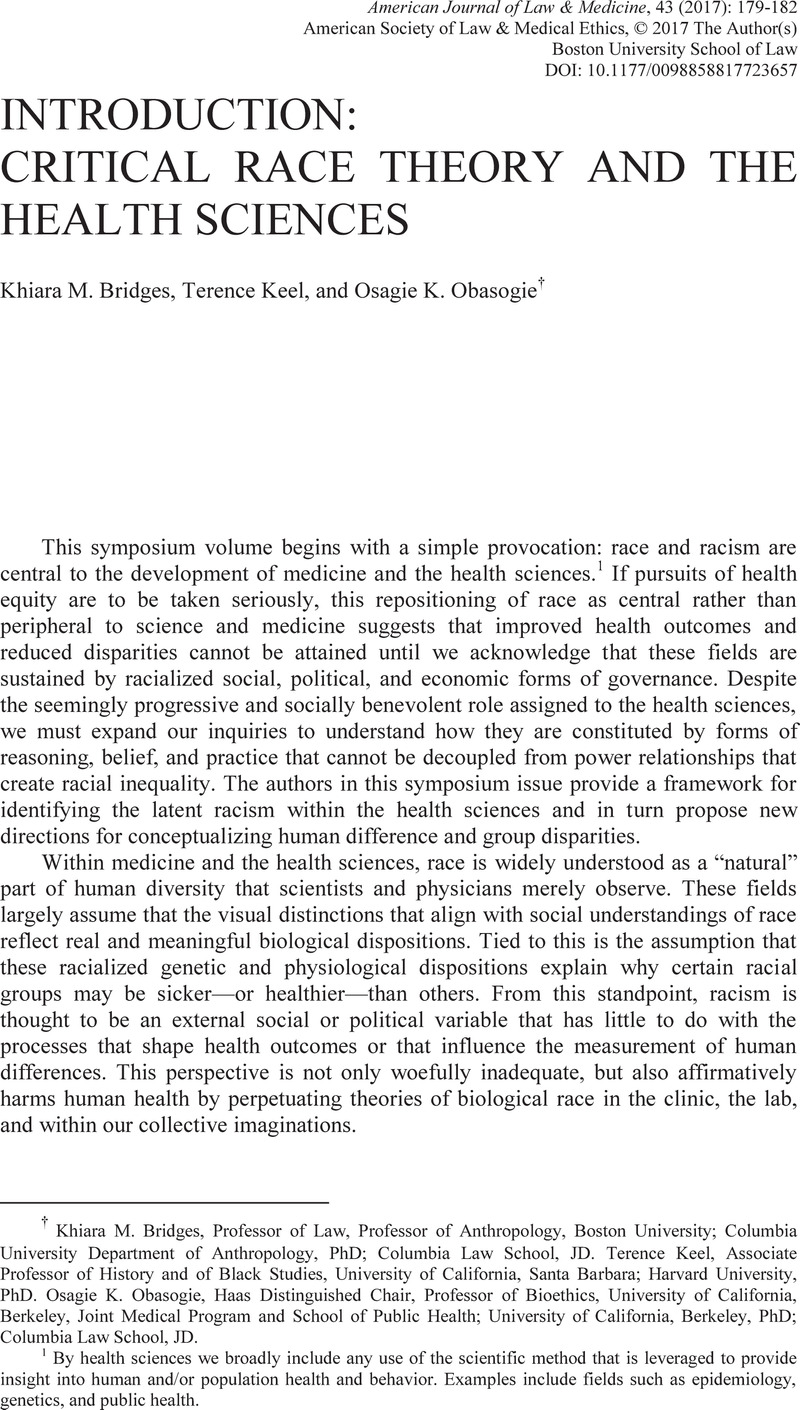Published online by Cambridge University Press: 06 January 2021

1 By health sciences we broadly include any use of the scientific method that is leveraged to provide insight into human and/or population health and behavior. Examples include fields such as epidemiology, genetics, and public health.
2 See generally Terence Keel, Divine Variations: How Christian Thought Became Racial Science (forthcoming January 2018); Ann Morning, The Nature of Race: How Scientists Think and Teach About Human Difference (2011); The Nature of Difference: Sciences of Race in the United States from Jefferson to Genomics (Evelynn M. Hammonds & Rebecca M. Herzig, eds., 2008).
3 See generally Stephen Jay Gould, The Mismeasure of Man (1981); Dorothy Roberts, Fatal Invention: How Science, Politics, and Big Business Re-Create Race in the Twenty-First Century (2012)
4 Our insights here draw upon the work of Chandra Ford and Amani Nuru-Jeter who have incorporated CRT within the field of epidemiology and public health. See Ford, Chandra & Airhihenbuwa, Collins, Critical Race Theory, Race Equity and Public Health: Toward Antiracism Praxis, 100 Am. J. Pub. Health S30 (2010);Google ScholarPubMed Ford, Chandra & Airhihenbuwa, Collins, The Public Health Critical Race Methodology: Praxis for Antiracism Research, 71 Soc. Sci. & Med. 1390 (2010)CrossRefGoogle ScholarPubMed; Nuru-Jeter, Amani & LaVeist, Thomas, Racial Segregation, Income Inequality, and Mortality in US Metropolitan Area, 88 J. Urb. Health 270 (2011).CrossRefGoogle Scholar See also Osagie K. Obasogie, Irene Headen & Mahasin S. Mujahid, Race, Law, and Health Disparities: Towards a Critical Race Intervention, Ann. Rev. L. & Soc. Sci. (forthcoming 2018).
5 Crenshaw, Kimberle, Mapping the Margins: Intersectionality, Identity Politics, and Violence Against Women, 43 Stan. L. Rev. 1241 (1991).CrossRefGoogle Scholar
6 For an example, see Jonathan Khan, Race in a Bottle: The Story of BiDil and Racialized Medicine in a Post-Genomic Age (2012).